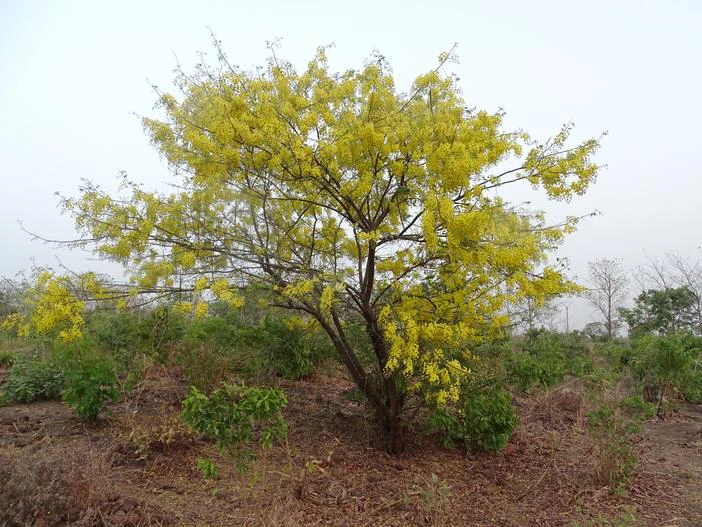Drumstick Tree
(Cassia sieberiana)
Drumstick Tree (Cassia sieberiana)
/
/

Farid AMADOU BAHLEMAN
CC BY-SA 4.0
Image By:
Farid AMADOU BAHLEMAN
Recorded By:
Copyright:
CC BY-SA 4.0
Copyright Notice:
Photo by: Farid AMADOU BAHLEMAN | License Type: CC BY-SA 4.0 | License URL: https://creativecommons.org/licenses/by-sa/4.0 | Uploader: AMADOU BAHLEMAN FARID | Publisher: Wikipedia Commons





Estimated Native Range
Climate Requirements
| • Precipitation | 1" - 153" |
| • High Temp. | 85°F - 111°F |
| • Low Temp. | 45°F - 73°F |
Summary
Cassia sieberiana, commonly referred to as drumstick tree, is a deciduous tree native to a variety of habitats in Africa, including savannas, open woodlands, and grasslands. It can grow to a height of 33 to 66 feet (10 to 20 meters) and is known for its bright yellow flowers that bloom in clusters, typically during the dry season when most other plants are not in flower. The tree’s form is upright with a spreading canopy, and it produces long, cylindrical seed pods that resemble drumsticks, hence the common name.
The drumstick tree is valued for its striking floral display and its ability to thrive in hot, dry climates, making it suitable for xeriscaping. It is also used for reforestation projects and erosion control due to its fast growth rate and adaptability to poor soils. In cultivation, it requires full sun and well-drained soil, and once established, it is drought-tolerant. However, gardeners should be cautious as Cassia sieberiana can become invasive outside its native range. It is also used medicinally in some cultures, and its wood is utilized for various purposes.CC BY-SA 4.0
The drumstick tree is valued for its striking floral display and its ability to thrive in hot, dry climates, making it suitable for xeriscaping. It is also used for reforestation projects and erosion control due to its fast growth rate and adaptability to poor soils. In cultivation, it requires full sun and well-drained soil, and once established, it is drought-tolerant. However, gardeners should be cautious as Cassia sieberiana can become invasive outside its native range. It is also used medicinally in some cultures, and its wood is utilized for various purposes.CC BY-SA 4.0
Plant Description
- Plant Type: Tree
- Height: 9-15 feet
- Width: 15-20 feet
- Growth Rate: Moderate
- Flower Color: Yellow
- Flowering Season: Spring, Summer
- Leaf Retention: Deciduous
Growth Requirements
- Sun: Full Sun, Part Shade
- Water: Medium
- Drainage: Medium
Common Uses
Bee Garden, Bird Garden, Butterfly Garden, Low Maintenance, Showy Flowers
Natural Habitat
Native to savannas, open woodlands, and grasslands in Africa
Other Names
Common Names: Yellow Cassia, West African Laburnum, Sieber’s Cassia
Scientific Names: Cassia sieberiana, Cassia conspicua, Cassia javanica, Cassia javanica, Cassia kotschyana, Cassia sieberana, Cassia sieberiana var. macrocarpa, Cathartocarpus conspicuus, Cathartocarpus sieberianus
GBIF Accepted Name: Cassia sieberiana